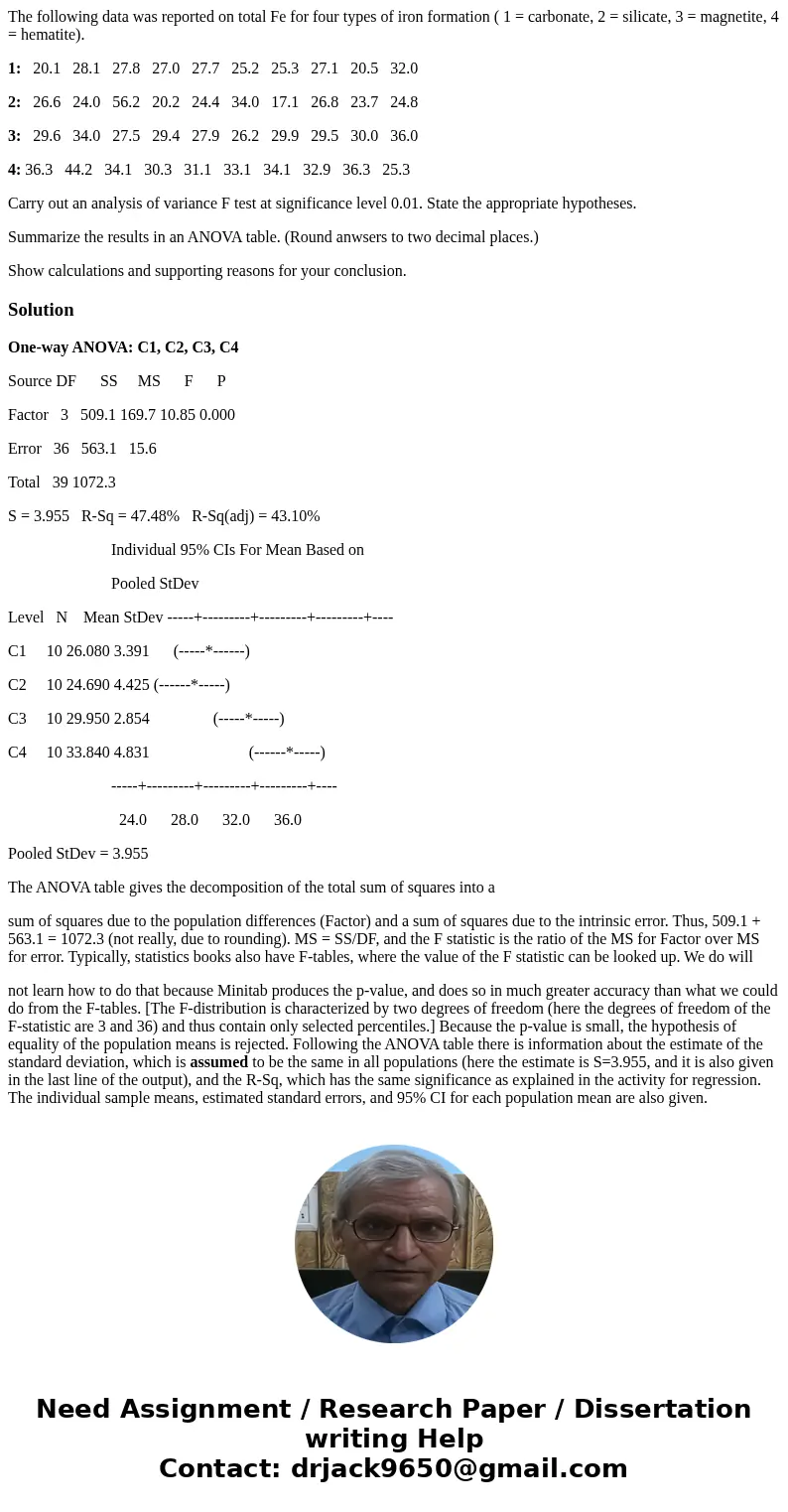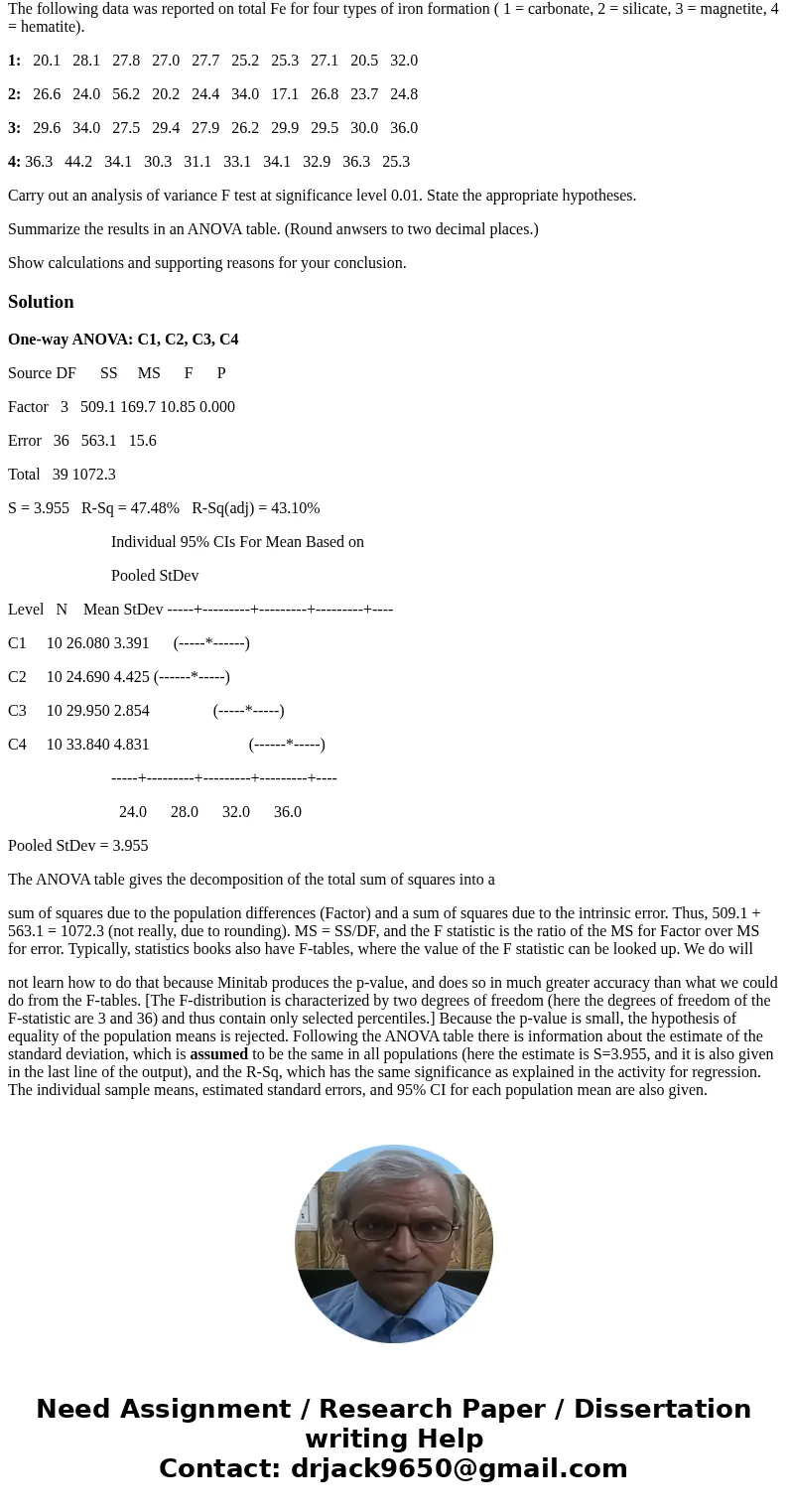The following data was reported on total Fe for four types o
The following data was reported on total Fe for four types of iron formation ( 1 = carbonate, 2 = silicate, 3 = magnetite, 4 = hematite).
1: 20.1 28.1 27.8 27.0 27.7 25.2 25.3 27.1 20.5 32.0
2: 26.6 24.0 56.2 20.2 24.4 34.0 17.1 26.8 23.7 24.8
3: 29.6 34.0 27.5 29.4 27.9 26.2 29.9 29.5 30.0 36.0
4: 36.3 44.2 34.1 30.3 31.1 33.1 34.1 32.9 36.3 25.3
Carry out an analysis of variance F test at significance level 0.01. State the appropriate hypotheses.
Summarize the results in an ANOVA table. (Round anwsers to two decimal places.)
Show calculations and supporting reasons for your conclusion.
Solution
One-way ANOVA: C1, C2, C3, C4
Source DF SS MS F P
Factor 3 509.1 169.7 10.85 0.000
Error 36 563.1 15.6
Total 39 1072.3
S = 3.955 R-Sq = 47.48% R-Sq(adj) = 43.10%
Individual 95% CIs For Mean Based on
Pooled StDev
Level N Mean StDev -----+---------+---------+---------+----
C1 10 26.080 3.391 (-----*------)
C2 10 24.690 4.425 (------*-----)
C3 10 29.950 2.854 (-----*-----)
C4 10 33.840 4.831 (------*-----)
-----+---------+---------+---------+----
24.0 28.0 32.0 36.0
Pooled StDev = 3.955
The ANOVA table gives the decomposition of the total sum of squares into a
sum of squares due to the population differences (Factor) and a sum of squares due to the intrinsic error. Thus, 509.1 + 563.1 = 1072.3 (not really, due to rounding). MS = SS/DF, and the F statistic is the ratio of the MS for Factor over MS for error. Typically, statistics books also have F-tables, where the value of the F statistic can be looked up. We do will
not learn how to do that because Minitab produces the p-value, and does so in much greater accuracy than what we could do from the F-tables. [The F-distribution is characterized by two degrees of freedom (here the degrees of freedom of the F-statistic are 3 and 36) and thus contain only selected percentiles.] Because the p-value is small, the hypothesis of equality of the population means is rejected. Following the ANOVA table there is information about the estimate of the standard deviation, which is assumed to be the same in all populations (here the estimate is S=3.955, and it is also given in the last line of the output), and the R-Sq, which has the same significance as explained in the activity for regression. The individual sample means, estimated standard errors, and 95% CI for each population mean are also given.


 Homework Sourse
Homework Sourse